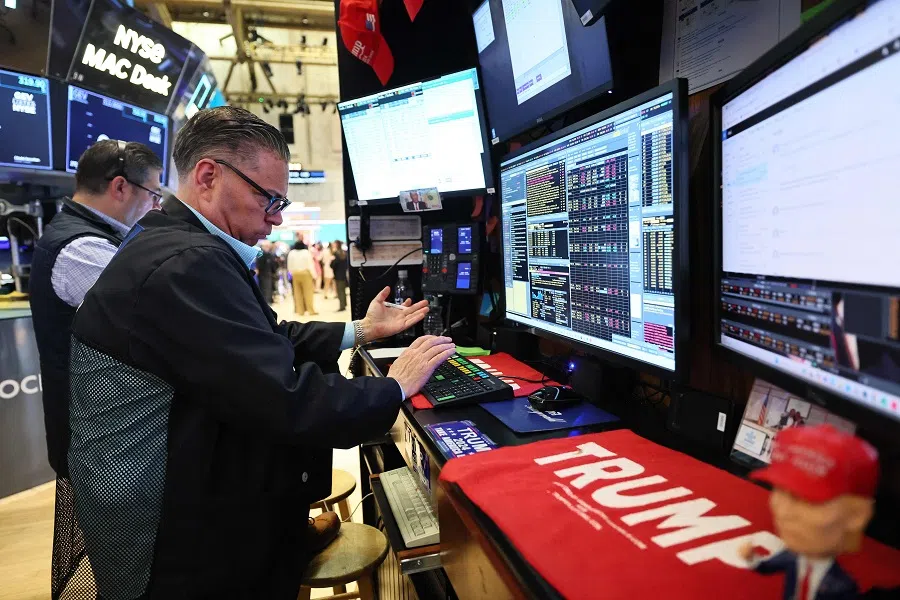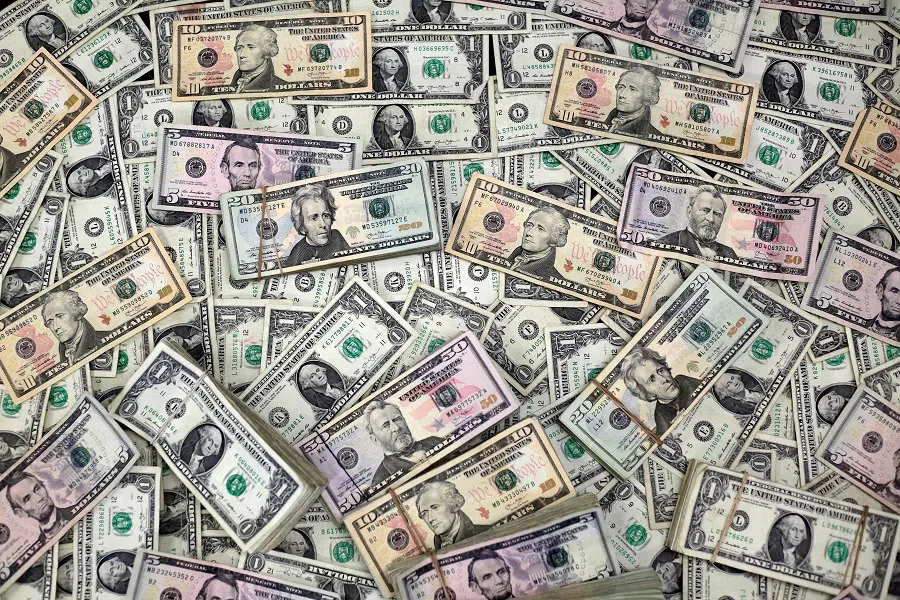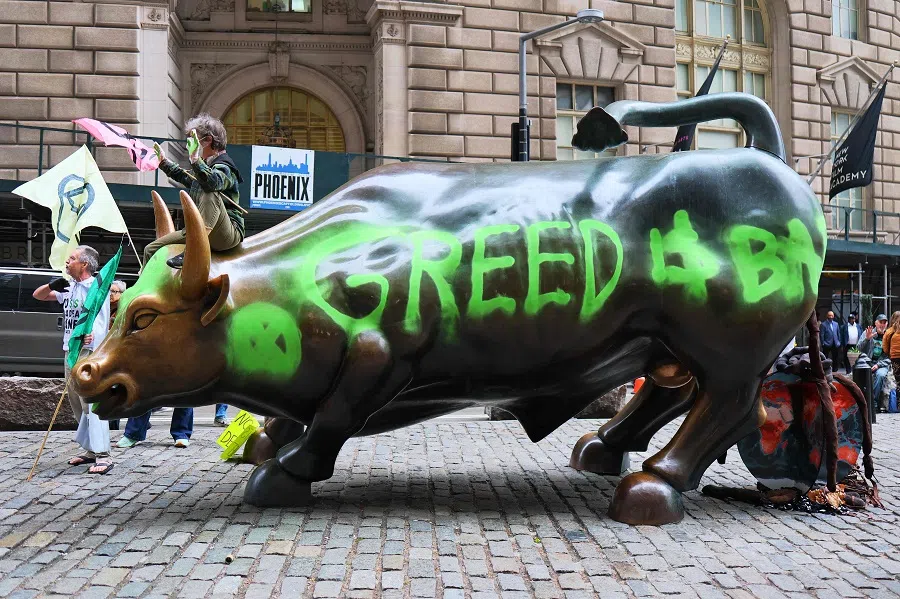From Ukraine to treasury bonds: Can America still be trusted?
Trump’s betrayal of Ukraine has shattered US credibility, raising urgent questions about the trustworthiness of US debt and the dollar. Chinese academic Deng Xize asks: can the world still rely on a system built on faith in a now uncertain partner?

The popular belief holds that the US dollar, as the primary international currency, played a crucial role in driving the world economy under the US-led economic order following World War II. This is not a theoretical proposition but rather a statement of fact.
However, such statements should be considered in a historical context — what was true in the past may not hold in the present, and certainly isn’t guaranteed for the future. While this perspective may have been accurate decades ago, the collapse of the Bretton Woods system and the rising US national debt have transformed the dollar economy into a debt-driven system. This debt-driven economy is now considered the largest Ponzi scheme in history — the US debt Ponzi scheme.
Production plunge and debt surge
US national power is inextricably linked to its debt levels. A historical analysis of the US’s own trajectory (a longitudinal view) reveals that its peak power occurred between the end of World War II and the early 1970s. During this time, the US dominated exports across various sectors — goods, capital, technology and political influence — while maintaining a low debt-to-GDP ratio. However, the Cold War rivalry obscured this peak, leading many to mistakenly believe that the US achieved peak power in the 1990s and early 2000s, after the Cold War’s end, when comparing the US to other countries at that specific time (a latitudinal view).
This later period of perceived US dominance stemmed more from the failings of other nations than from genuine American superiority. Rather than prompting internal improvements and strengthening its relative position, the end of the Cold War contributed to the escalating US debt, effectively creating a massive Ponzi scheme.
... since repayment must ultimately be backed by tangible goods, the US’s ability to manage and repay its massive debt is inevitably weakened.

Since 1970, US trade has transformed, most significantly with a sharp decline in manufactured goods exports. Thomas Friedman, in The World Is Flat (2005), argued this was a deliberate strategic move. As a globalisation champion, the US planned to outsource light and medium industries to countries like India, China and Mexico, while maintaining control of high-profit sectors like tech, intellectual property, and premium brands.
Ironically, a decade later, then-President Trump criticised this very outsourcing — previously lauded as a benefit of globalisation — highlighting how quickly circumstances had shifted.
Furthermore, the US initially envisioned India, not China, as the “world’s factory” in its globalisation plan. China’s unexpected rise disrupted this vision.
This US-designed system ultimately hollowed out American industrial capacity, even as its consumption levels — far above the global average — remained unchanged. The result? A reliance on borrowing, using new debt to service old, creating a precarious economic cycle.

This is a key factor contributing to the ballooning US debt — comparable to running up a tab or robbing Peter to pay Paul in everyday terms. However, as production capacity declines and debt increases, and since repayment must ultimately be backed by tangible goods, the US’s ability to manage and repay its massive debt is inevitably weakened.
Even if manufacturing leaves China, further global industrialisation is unlikely, making large-scale US reindustrialisation improbable and Trump’s strategy likely to fail.
Buy now, pay later: US creditworthiness
Borrowing is not uncommon, but the question is: how will the debt be repaid? Based on the trajectory of the US economy, the country does not have the ability to repay most of its debt, as US Treasury bonds are not adequately backed by tangible assets.
While Trump aims to bolster US finances by encouraging manufacturing’s return, the likelihood of significant reshoring is low. Even if manufacturing leaves China, further global industrialisation is unlikely, making large-scale US reindustrialisation improbable and Trump’s strategy likely to fail.
The US has been able to continuously increase its debt without collapsing due to its creditworthiness. Relative to other countries, and particularly since World War II (prior to the Trump administration), the US has maintained a strong national credit rating. This is the key factor enabling continued debt expansion without collapse, despite the country’s limited repayment capacity. Without such comparisons, distinctions between strong and weak credit, and the concept of creditworthiness itself, become meaningless.

Since 1970, US production has declined while its debt-fuelled consumption of globally produced goods has surged. This growing US debt has propelled worldwide production, mirroring the temporary boosts of economic bubbles. Just as personal borrowing can stimulate spending, but isn’t always sustainable, the US model raises concerns.
Imagine businesses depending on one client who buys relentlessly on credit.
Key questions emerge: Can the US sustain its ever-increasing debt? Is it creating history’s largest Ponzi scheme? And should other economies rely on a heavily indebted nation? Imagine businesses depending on one client who buys relentlessly on credit. Those IOUs then become the currency of trade among the businesses — a risky system with potentially devastating consequences.
Of course, the simple answer is that US debt is backed by a strong creditworthiness, so these countries trust the US’s IOUs. But does this explanation grossly simplify the huge risks involved?
If other countries recognise the substantial risks associated with US debt and decide to sell their holdings in favour of tangible assets, what impact would this have on the US and the global economy? This prompts another question: Isn’t the notion that US borrowing underpins the global economy essentially the largest Ponzi scheme in history, albeit not a particularly sophisticated one?

Creditworthiness is neither created from thin air nor limitless. In terms of debt, the most important guarantee of creditworthiness is repayment ability, followed by credit history. In the long term, if a debtor lacks reliable repayment ability, what guarantees their creditworthiness? Why would creditors continue to lend to them?
In Uncle Sam we trust
Two perspectives on US debt merit careful consideration.
First viewpoint: the US debt-to-GDP ratio is not particularly high — it is even lower than the UK’s national debt at its peak. This view focuses on the ratio as a variable but overlooks more critical variables such as repayment ability. For example, during a period of major expansion in a certain industry, higher leverage can lead to higher profits (in absolute terms, not in profit margin), so a high debt ratio can be considered safe.
A poor person with a very low debt ratio might still struggle to borrow even 100 dollars due to low repayment ability, making it hard to establish creditor confidence. In contrast, a wealthy person with a high debt ratio might still be able to borrow large sums if they have strong repayment ability (such as investing in a promising business). Therefore, the rationality of debt lies not primarily in the debt ratio, but in the ability to repay.
In this sense, although China also has a relatively high debt ratio, its debt is mainly domestic rather than external, and its vast production capacity provides a guarantee for repayment ability.
The US still maintains some leverage primarily because the US debt Ponzi scheme has not yet collapsed, largely due to other countries’ delayed recognition of the risks associated with US debt.

Second viewpoint: in economic negotiations with the US, other countries are bound to lose because the US is Party A (the dominant party in a contract), and no Party B can outmatch Party A. However, this viewpoint assumes that Party A has strong creditworthiness and sufficient payment ability. In reality, the US lacks the necessary payment ability, so it is not only a poor example of Party A, but an unqualified one.
The US still maintains some leverage primarily because the US debt Ponzi scheme has not yet collapsed, largely due to other countries’ delayed recognition of the risks associated with US debt. Illustrating the role of perception, Samuel E. Finer’s The History of Government from the Earliest Times distils Vilfredo Pareto’s insight: “Given political actions do not depend on whether a proposition is true or false, but on what is believed about them.”
This profound idea can be applied across all fields. People’s actions are based not on facts, but on perception, which can change.
US credibility falters in Ukraine
Is US national debt still credible? It might have seemed barely credible in the past, but if we assess it through the lens of Trump’s betrayal of Ukraine, it becomes completely unreliable.
If the US continues to lose its international credibility, what actions can the rest of the world take? How should countries respond to the US dollar and US debt if they become engulfed in a crisis of trust?

Trump’s betrayal of Ukraine has led to the collapse of US credibility. And if credibility has collapsed, what then guarantees the credibility of US Treasury bonds? How can other countries be sure the US will not default entirely? The hallmark of a Ponzi scheme is that one is very trustworthy — until at last they are not.
So, with both the repayment ability and credit foundation of US Treasury bonds and the US dollar significantly worse off, how can credibility be maintained?
Safeguarding against US debt
If Trump can break trust, reverse the US’s longstanding position and act in bad faith on a major principle like the Russia-Ukraine war, what isn’t he capable of? If the US continues to lose its international credibility, what actions can the rest of the world take? How should countries respond to the US dollar and US debt if they become engulfed in a crisis of trust?
Countries need to clearly assess the repayment ability and creditworthiness of the US as Party A and remain highly vigilant about the risks associated with US debt and the dollar. They must leverage their national strength to mitigate the risks posed by the US debt Ponzi scheme.
This means transitioning from a US-centric strategy, where production is based on US needs, to a diversified strategy that focuses on what countries need from each other.

First, promote local currency swaps. Second, establish a regional currency — the euro is a model example. Third, build an integrated regional economy — again, the European Union stands as a model. Fourth, as the US is no longer a reliable Party A, countries should adopt a production-oriented approach to foreign trade. This means transitioning from a US-centric strategy, where production is based on US needs, to a diversified strategy that focuses on what countries need from each other.
These measures, especially local currency swaps, may increase transaction costs, but they are a reasonable choice to minimise risk and avoid putting all one’s eggs in one basket.
This is an updated version of an article first published in Lianhe Zaobao as “美债经济已沦为史上最大庞氏骗局”.





